19 Oct Risk Management Plan Components
Finding and evaluating your business’ risk is crucial for every business. Finding the risk management plan components that can help your business be better protected is the first step.
Defining risk management plan
A risk management plan refers to a written document that encompasses the process an organization has set to combat any potential risks or hazards. To begin with, the process starts by formulating a team of stakeholders who then review potential risks that can strike an organization. The team comprises senior-most management and the compliance officer in addition to departmental managers. Other than this, if the business is keen on developing software, a project manager will be part of it as well. The team must add a project manager from each team to review stages of the developmental process and respond to any potential project risks.
Once a business is done with this, they can start working on crafting the risk management plan.
Why is it important to have a risk management plan?
There are times when projects see an unfortunate end when the working relationship between team members is not strong or hits rock bottom for some reason. This is why having a solid risk management plan is of paramount importance and, perhaps, a crucial part of project management. In addition to this, a sound risk management plan can keep small mishaps from becoming big-time disasters. Hence, to ensure that projects go smoothly, it is a project manager’s core responsibility to craft a risk management plan. As far as a format in terms of length and layout is concerned, there is no hard and fast rule. A good risk management plan is all about having critical information in one place.
What are the components of a risk management plan?
Typically, a good risk management plan consists of five components. These are definitions, presumptions, structure detailing risk breakdown, impact, and cost and schedule.
Definitions/terminologies
These are terminologies or phrases that help identify and analyze potential risks. The section clearly puts out what each term means and how they help with clarification. Often, you can expect a definition was written out in the following manner,
Very Low: The event is unlikely to occur under usual circumstances
Low: The event is unlikely to occur. However, the teams should take note.
Presumptions
If there is something that can cast a significant impact on risk analysis, it is assumptions. The following are example questions:
- What are the core assumptions that support the costs of the project?
- What are the assumptions that support the project timeline, such as milestones?
- Does the company have the required skill set or expertise in this line of work? If yes, how long has the experience been?
The risk breakdown structure
This particular part covers major categories of potential risks. Additionally, these categories vary from industry to industry.
The impact matrix
By definition, a risk is Probability x Impact. Hence, strong consideration must be given to both of these factors when a business’s goal is to determine each risk’s priority. To put it precisely, this matrix helps determine the probability and impact of each potential risk numerically.
Cost and schedule
This section can be mentioned in the form of probabilities, ranging from low, medium to high, or as could be as complex as statistical analysis.
If you need help or want to discuss risk management plan components for your business, talk to us today!
To find out more, contact one of our talented Risk Advisors today!
CONTACT AN ADVISOR NOW!
If you found this post helpful, please consider sharing it.



No Comments